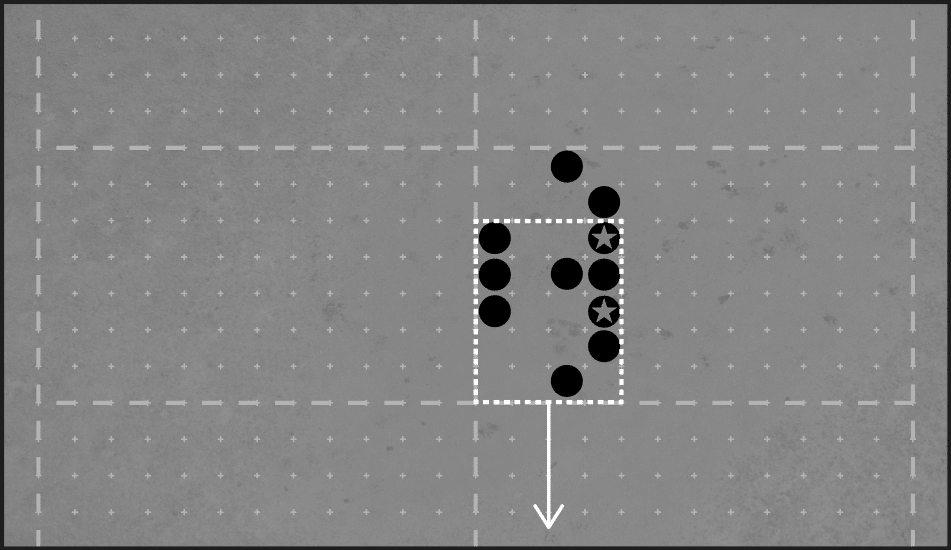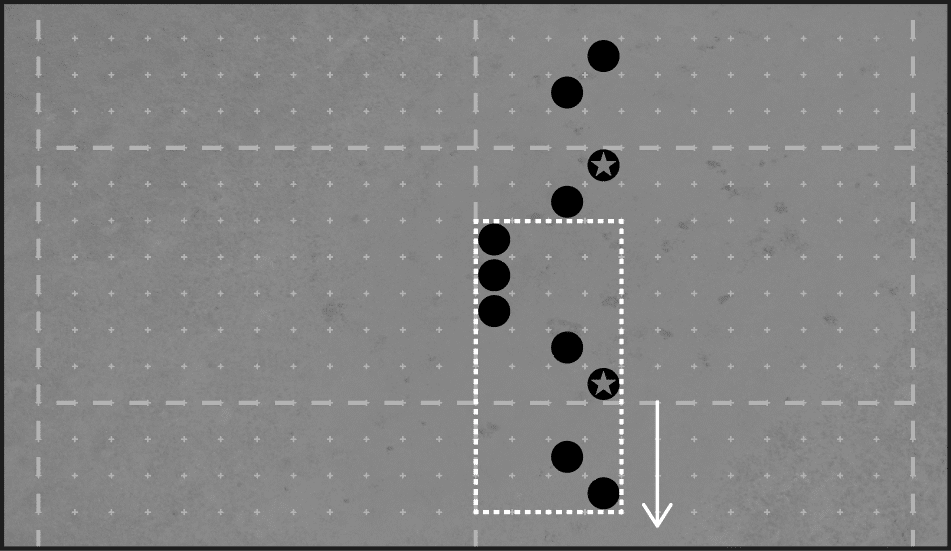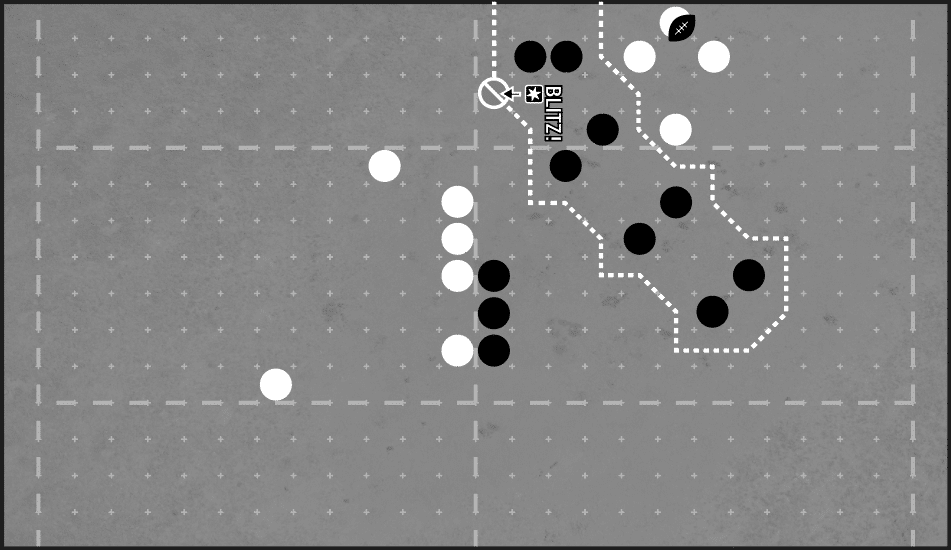If you ever wondered, yes, it is better not to grant a touchdown than to grant one.
But in the end, it is not that easy because to win a game, you need to score more touchdowns than your opponent … by all means possible. Unfortunately for your pride, granting a touchdown is sometimes a tactic that is worth trying.
But what do we exactly mean by “granting a touchdown”? Does a coach say to the other, “Mr. Englishman, please score first”? Not exactly! In fact, unless your counterpart is a trigger happy noob, you will have to provide him some mighty good reasons to score!
In short, granting a touchdown is provoking one by applying pressure to a point where your opponent risks failure if he does not immediately use the cleanest path to score.
The Agiles
If you play an agile team, you will meet a ton of situations where you can consider to grant a touchdown. Instead, if you choose the path of stubbornness, not only you may not get the expected result, but you may also handicap yourself for the second half with a lack of manpower (elfpower) to prevent your opponent from calling all the shots while sweeping the pitch clean.
Traditionally, much of the agile’s defensive game is based not only on destabilizing the offensive line but also capitalizing on this instability to steal the ball. You must bear in mind, however, that if you fail, having risked your most convincing arguments to delay the opponent’s offensive by a single game turn is rarely a good investment. For example, chances are you now have a quality player off the pitch, one less turn to score back and some vital assets exposed to a blitz or aggression. Many things can go awry when trying to aggressively challenge an offensive.
The JACKS OF ALL TRADE
Jacks of all Trade teams can sometimes garner a profit by granting a touchdown against a fast and agile team, just because they do not have enough big muscles and ultra-strong armors to withstand prolonged trench warfare. Even against the agile teams, vainly and stubbornly delaying the inevitable can cost some bad KOs or casualties which will then be sorely missed by the offensive effort. If a disaster of this type occurs, you have probably lost the game to your Thick Skull.
The LUMBERJACKS
The Lumberjacks have one more reason then the jacks of all trade to force a more agile opponent to score early. Thanks to their strength skills access, they benefit from three free blocks and a blitz at kickoff which are all opportunities to use the Claws and Mighty Blows of great game nights to eject players off the pitch. The sooner these events occur, the more leverage they can gain from it for the rest of the game. In itself, that is not a good enough reason to grant a touchdown since casualties are too random to be reliable, but it is still a nice bonus to consider especially if your opponent does not have many defensive skills like Block, Wrestle and Dodge.
Granting the First Touchdown and Winning the Game 2-1
It may seem counterintuitive at first glance because you will be behind with a 0-1 score when granting the game’s first touchdown. Quickly, for those who do not know (and because I will discuss it in a future article), the idea is to kick the ball and quickly grant a touchdown to then enjoy 14 to 15 ball possession game turns and win with a 2-1 score. This is a very common approach when a Lumberjack team faces an Agile one. Do not underestimate this strategy’s importance to Blood Bowl.
How to PROVOKE a Touchdown?
In this regard, we often hear rather average advises. In particular: “Molest his peripheral players relentlessly!” Or: “Serial gang foul his favorite player!” These tips may work against a technically (and emotionally) fragile coach, but that is about it. First, casualties are not reliable since they are too random. Second, the best coaches have understood that their players are at the team’s service and that it is perfectly correct to sacrifice some when running the clock to ensure victory. Or, if you will, against the best, it will flow like water on a duck’s back.
More realistically, it is not as easy as it seems to provoke a touchdown because, since you do not have the ball, you can not decide when it will cross your end zone. Also, when a better coach than you starts the drive with the idea of scoring on the half-time’s turn 8, he will often succeed.
Disclaimer
No play is as clean as the graphs below because their mission is to convey you a concept. Every Blood Bowl game is a sinking boat and your success depends on your ability to keep yours afloat by creatively patching, coping, and maneuvering. Make no mistake, either you will skillfully sail your ship to port or you will go down with it. Whatever happens, history will hold you responsible.
Starting setup
When you are planning to grant a touchdown, it is better to position your players in a reactive starting setup to reduce the chances of getting caught on the wrong foot. This reactivity then makes it possible to apply an important amount of pressure in a limited pitch area. Conversely, when you choose to use a defensive setup that covers a maximum of offensive game plays, each defensive link is more fragile and your team is slower to restore balance after a breakthrough.


What to do next …
Your opponent has bitten the hook! Bravo! He even enthusiastically pushed his offensive too far, weakening the link between his ball carrier and his support players (as often rookies do). Here is the perfect opportunity to apply a lot of pressure and force an advantageous resolution. Ideally, this pressure will either make him lose the ball (hopefully to your profit) or force him to quickly score, giving you the time to comfortably score back. It is a good way to position yourself favorably for the rest of the game.
To provoke a touchdown when your opponent has compromised himself energetically in your defensive zone, you must work to divide his offensive into two groups to prevent his support players from helping the ball carrier’s group. This way, you will break the offensive’s cohesion and therefore its control over the game timing. When no coach controls the tempo, events tend to happen quickly. After dividing the opponent’s deployment, cut off the ball carrier’s retreat to force him to make his way to your end zone.



Is provoking a Touchdown Common?
It depends a lot on the coaching levels in presence. It is rare for rookies to use this tactic because it requires some game control. Experienced coaches are a little more “awoke” to this possibility, but rarely have a strong enough positioning to prevent this maneuver from being used against them. Veterans coaches often use it against rookies since it is a great way to seize game control without risking the team’s health. However, champions and legendary coaches will not easily be deceived into a situation that will force them to score early unless their team is weakened to the point that it is now or never.
As you can see, granting a touchdown is certainly not optimal and it is mostly better to fiercely defend. But sometimes stubbornly delaying the inevitable is a bad exchange and that is why knowing when and how to provoke a touchdown is an essential tactic to master. Now it is up to you to add it to your arsenal!
